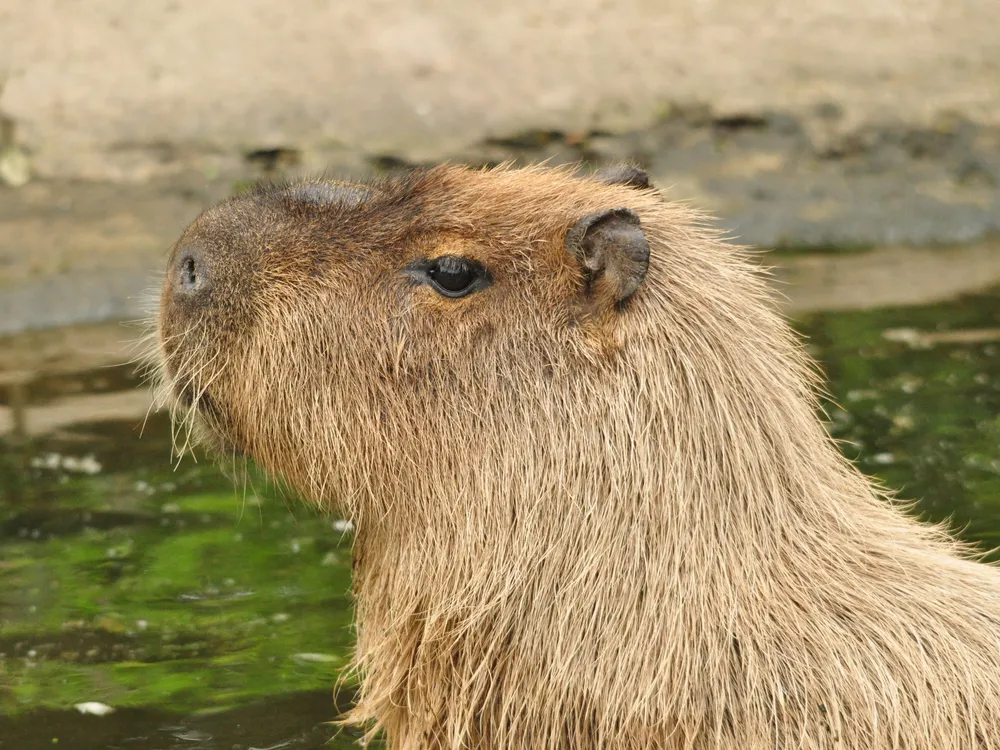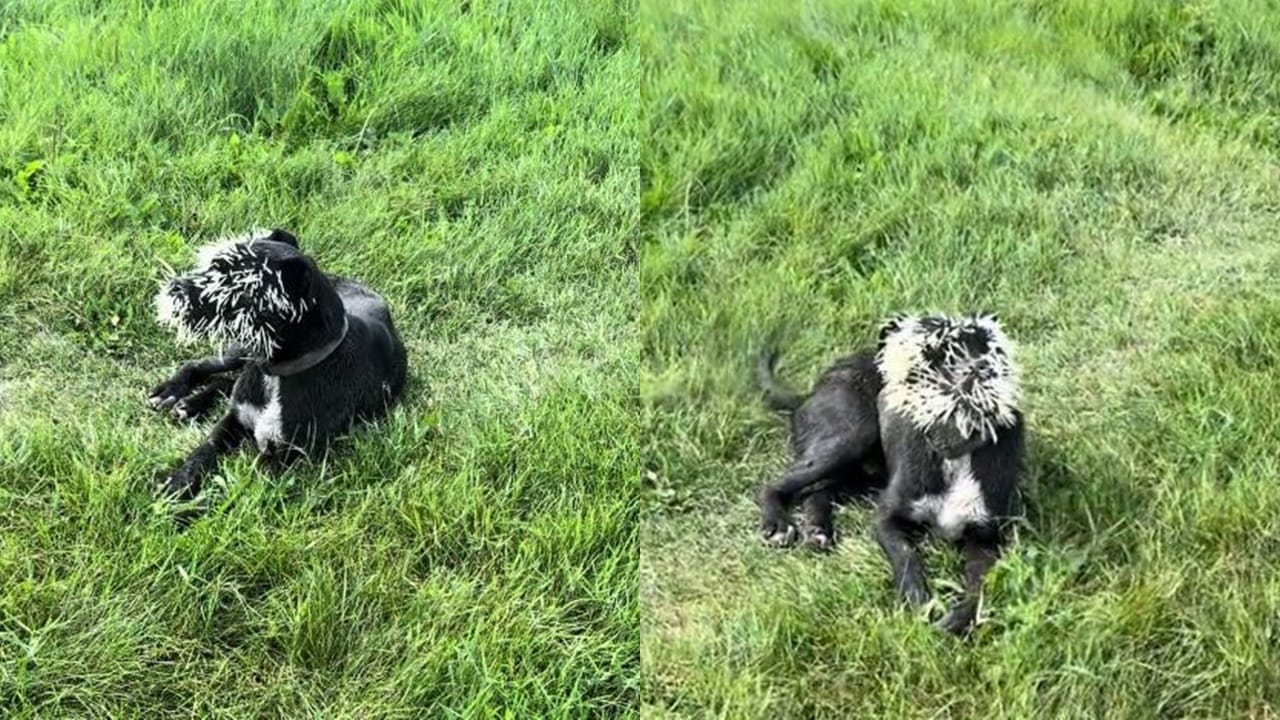An adventurous capybara named Cinnamon has captured the hearts of many after escaping her enclosure at Hoo Zoo and Dinosaur World in Telford, England.
This “beloved” rodent has been on the run for several days, evading capture while munching on grass and enjoying her newfound freedom.
Despite efforts to bring her back home, Cinnamon seems content living life on her own terms.
A Daring Escape: How Cinnamon Got Away
It all started last Friday when Cinnamon, a clever and curious capybara, saw her chance to break free. Hidden in the tall grass near the gate of her enclosure, she waited for the perfect moment.
As the zoo keepers began mowing the paddock, Cinnamon seized the opportunity and darted around a tractor, slipping out unnoticed. Her quick thinking and agility have kept her ahead of the search teams ever since.
The Search Begins: Tracking Cinnamon’s Movements
As soon as the staff at Hoo Zoo realized Cinnamon was missing, a coordinated search effort began. Zoo teams, wildlife experts, and even drones were deployed to locate the capybara.
Cinnamon was spotted on Tuesday, not far from the zoo—just 200 meters away, in fact—thanks to the help of drone footage. She appeared to be completely at ease, grazing on grass in a nearby field.

Despite being located, capturing Cinnamon has proven to be a challenge. According to a Facebook post from the zoo, the area she’s hiding in is filled with dense undergrowth. While Cinnamon can easily navigate through the thick vegetation, the search team is struggling to keep up.
Cinnamon’s Last Sightings: Poop, Tracks, and Drone Footage
The search team hasn’t lost hope, however. Fresh tracks and capybara droppings have been found, indicating that Cinnamon is alive and well.
On Tuesday night, thermal drones once again spotted her in the same field beside the zoo. She even made another appearance in drone footage on Wednesday, still close to her last known location.
For now, Cinnamon is in no immediate danger. She’s got plenty of food and is in an area free of predators. “At present she is comfortable, content, not short on food and not at risk to predators,” Hoo Zoo stated in their update.
The Challenge of Capturing a Capybara: Why It’s Not So Simple
Although it may seem like recapturing Cinnamon should be easy—after all, she’s only a short distance from her home—the task is far more complicated than it appears.
The thick undergrowth makes it difficult for the search team to approach her, and they’re concerned that using nets could stress her out, possibly causing her to flee even further.
To avoid causing Cinnamon distress, the zoo has been in “lengthy discussions” with wildlife capture professionals.
They’ve experimented with different methods to lure her back, including playing capybara sounds and using scents from other capybaras at the zoo, but so far, these attempts haven’t been successful.
Cinnamon’s Family and Life at Hoo Zoo
Cinnamon isn’t the only capybara at Hoo Zoo. She lives there with her parents, Chimu and Chincha, and her twin brother, Churro.
According to the zoo’s owner, Will Dorrell, Cinnamon and her brother are known for their mischievous behavior.
“Our two young capybara here are always trying to work out a different way of trying to cause us headaches,” Dorrell told BBC News. “They’re extremely intelligent, which a lot of people might not necessarily appreciate.”

Capybaras, the world’s largest rodents, are native to Central and South America. They are social animals, often living in groups near rivers or swimming holes.
While they enjoy the safety of numbers, they also have to watch out for predators like jaguars.
In the wild, capybaras face threats from deforestation, habitat destruction, and poaching, though their population remains stable.
Is Cinnamon in Danger? The Zoo’s Concerns
While Cinnamon seems to be enjoying her time in the wild, there are concerns about her wandering too far.
One particular worry is that she might move into a nearby area owned by the Ministry of Defense. If she crosses into this territory, it may be impossible to retrieve her.
The zoo is trying to avoid any drastic measures, as they don’t want to push Cinnamon into a more dangerous situation. The recapture team is focused on her well-being and safety, making it a priority to bring her back unharmed.
Wildlife Escapes: Not Just Cinnamon’s Adventure
Interestingly, Cinnamon isn’t the only animal to escape a zoo enclosure recently. In Reynosa, Mexico, a Bengal tiger managed to escape and roam free for about a week before being safely recaptured.
The tiger was caught using a trap, and officials ensured it wasn’t harmed during the process. This shows that even the most unlikely of animals, from giant capybaras to Bengal tigers, have a knack for finding freedom.
What’s Next for Cinnamon? The Zoo’s Plans
For now, Hoo Zoo has decided to pause their recapture efforts until Friday night unless the situation changes. They’re monitoring Cinnamon closely and keeping track of her movements with drones and ground teams.
The zoo has reassured the public that Cinnamon is safe and thriving in her temporary home. As of now, she is “extremely comfortable and happy in that area,” according to the latest Facebook post.
While the zoo remains hopeful that they’ll bring Cinnamon home soon, it seems she’s in no rush to return. After all, who wouldn’t want a bit more time to roam free, explore the great outdoors, and munch on some fresh grass?
Conclusion
Cinnamon’s daring escape has turned into a story of resilience, freedom, and cleverness. As search teams continue their efforts, Cinnamon remains elusive, enjoying her time in the wild.
While the zoo is doing everything they can to ensure her safe return, for now, Cinnamon is “living her best life.”
FAQs
1. Why did Cinnamon escape from the zoo?
Cinnamon took advantage of a routine task at the zoo—mowing the paddock. She was hidden in tall grass and seized the opportunity when the gate was opened.
2. Is Cinnamon in danger?
No, Cinnamon is safe for now. She has plenty of food and there are no predators in the area she’s been spotted in.
3. What are capybaras known for?
Capybaras are the largest rodents in the world and are highly social animals. They are native to Central and South America and often live near rivers.
4. How is the zoo trying to capture Cinnamon?
The zoo is using drones, playing capybara sounds, and employing smells from other capybaras to lure her into a live trap.
5. What will happen if Cinnamon moves into the Ministry of Defense area?
If Cinnamon enters this area, it could complicate recapture efforts. The zoo is trying to prevent this from happening by carefully monitoring her movements.








